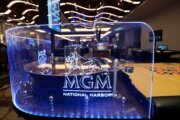Costco Wholesale Corporation (NYSE: COST) is a staple of American retail; along with Wal-Mart Stores‘ ( WMT) Sam’s Club and BJ’s Wholesale, it dominates the concentrated yet competitive membership warehouse industry.
And over the long term, Costco stock has been a winner. Over the last 10 years, COST shares are up more than 150 percent, clobbering the 66 percent return of the Standard & Poor’s 500 index. The further you go back the more impressive its outperformance becomes.
But in recent years, Costco has lost its status as Wall Street’s retailer du jour to Amazon.com ( AMZN), which seems to be eating up everything in retail nowadays — including attention.
So, should you buy COST stock? Or is investing in Costco not such a deal after all? Here are three pros and three cons when it comes to shares of the warehouse club.
[Read: 7 Stocks That Should Grow With Millennials.]
Pros for Buying Costco Stock
Growing despite Amazon. Looking back, it makes sense that companies like Borders, Circuit City and Radio Shack would crumble in the face of Amazon. They each sold relatively narrow ranges of items, and there was no reason those items couldn’t be price-shopped and bought online.
While 2017 has generally been awful to every retailer not named Amazon — ask J C Penney ( JCP), Macy’s ( M), Dick’s Sporting Goods ( DKS), Under Armour ( UA, UAA), GameStop ( GME) and countless others if you want proof — Costco’s business has actually been chugging along nicely recently.
U.S. same-store sales jumped 7.4 percent in August and rose 6 percent in July — something you simply don’t see at hardly any other OG retailers in 2017.
A discounter, discounted. COST stock, which was trading near all-time highs, took a bath in mid-June when Amazon announced its intention to buy Whole Foods Market. Shares went from the $180s to the $150s, and despite a modest recovery, shares still trade for a 10 percent discount to pre-announcement levels. It makes sense for traditional grocers like Kroger Co. ( KR) and Supervalu ( SVU) to tumble. Costco’s fall is more of a headscratcher.
“While we recognize some overlapping service areas, we view a Costco membership and an Amazon Prime membership as more complimentary than competitive,” says Josh Blechman, director of Capital Markets at ACSI Funds.
Costco offers club membership to its bulk discounts for either $60 or $120 a year, depending on what benefits you want. Bulk buyers are unlikely to abandon Costco simply because Whole Foods is under new ownership.
“Costco also has business lines that Amazon is not currently equipped to enter, such as gasoline and car tires. We feel the pullback COST stock experienced in the wake of the AMZN-WFM merger was disproportional to the potential impact on Costco grocery sales,” Blechman says.
[Read: Make AMZN Stock Great Again: Time for Splitsville.]
That price haircut from the $180s to the $150s and $160s was a gift to anyone bullish on Costco stock, not a curse from Mr. Market.
Costco’s formidable moat. Like Amazon, Costco has realized that customers with a little skin in the game, i.e. members, are more lucrative than non-members. They tend to shop more frequently and show more loyalty than non-members because they have an incentive to get a bang for their buck.
Costco has more than 45 million paying members shopping at its stores. It has more than 500 warehouses in the U.S. and a total of more than 720 worldwide. It has strategically located real estate with stores that often boast gas stations selling fuel at discount prices to attract more store traffic.
On top of that, Costco is now the largest wine retailer in the U.S., and its in-house Kirkland brand of products is helping to reliably boost margins as COST vertically integrates.
“It also has the economic moats of efficient scale and intangible assets,” says Bob Johnson, president and CEO of the American College of Financial Services in Bryn Mawr, Pennsylvania.
“Efficient scale is a situation where a market is currently served by existing players in an effective manner and would be difficult for new entrants to enter the market,” Johnson says. “There is also a great deal of brand equity with the name Costco.”
Costco is here to stay, regardless of what Amazon does.
Cons For Buying Costco Stock
Costco shares aren’t cheap. While it’s true COST stock took what appeared to be an unfair haircut due to the Amazon-Whole Foods merger that made the whole industry paranoid, shares still could be deemed a little pricey.
Costco stock trades for about 27 times earnings, which is higher than the S&P 500, and all with earnings and revenue growth at around 8 percent. It seems like a generous valuation; although since the grocery industry is so high-volume and low-margin, it means profits would instantly double should profit margins increase by just 210 basis points.
A change like that, though, will take a long time.
Measly dividend. One argument for why Costco shares trade at a multiple of 27 is that investors are willing to pay for safety. And more than anything, a steady, affordable dividend spells safety to Wall Street.
While COST stock does pay a steady, affordable dividend, it’s frankly rather pitiful at 1.3 percent. It’s not close to what Walmart (2.6 percent) and Target Corp. ( TGT) at 4.4 percent offer, and an income investor with this stock in their portfolio might find themselves insulted.
“Investors looking for cash on cash return certainly would not find COST attractive,” Johnson says.
Generally weak retail environment. Last but not least, the retail environment in general is pretty lousy nowadays for almost all brick-and-mortar businesses. While Costco has recently been the exception to the rule, one wonders whether the bulk seller will have to conform to whatever innovations Amazon makes in the industry to compete for customers.
Costco is building its online presence, but like most of its peers remains light-years behind Amazon. Chief financial officer Richard Galanti has said roughly 4 percent of Costco’s sales are online. That works out to about $1.2 billion in online sales last quarter. Amazon e-commerce revenue clocked in at $33.9 billion last quarter, or $1.2 billion every three days.
Will Costco’s square footage dedicated to selling books, electronics and clothes — each areas where Amazon has ruthlessly demolished billion-dollar businesses — eventually need to be unceremoniously converted and used to sell something higher-margin? Only time will tell.
Verdict. It’s never been clearer how effective the specter of Amazon is at breeding Wall Street paranoia than when the Amazon-Whole Foods deal was announced. Shares of every publicly traded grocer plunged — even nontraditional “grocers” with differentiated businesses and loyal paying members like Costco.
Markets overreacted, to the benefit of the opportunistic investor looking for a prime chance to buy COST stock.
Despite its premium valuation and the poor aesthetics of the retail sector, Costco shares are reasonably priced. That 27 P/E is a little frothy, but consistent with Costco’s five-year average and understandable in an age of historically low interest rates.
Whole Foods already existed as a Costco competitor. With Amazon behind it, it may be a different beast, but nothing more fearsome than Walmart, BJ’s or Sam’s Club have been for decades.
[Read: Should I Buy Walmart Stock?]
As Warren Buffett famously said, “It’s far better to buy a wonderful company at a fair price than a fair company at a wonderful price.” Costco, to be sure, is the former.
More from U.S. News
The 25 Best Blue-Chip Stocks to Buy for 2017
Artificial Intelligence Stocks: 10 Companies Betting on AI
7 Dividend Stocks to Buy That Pay More Each Year
Should You Buy Costco (COST) Stock? 3 Pros, 3 Cons originally appeared on usnews.com







